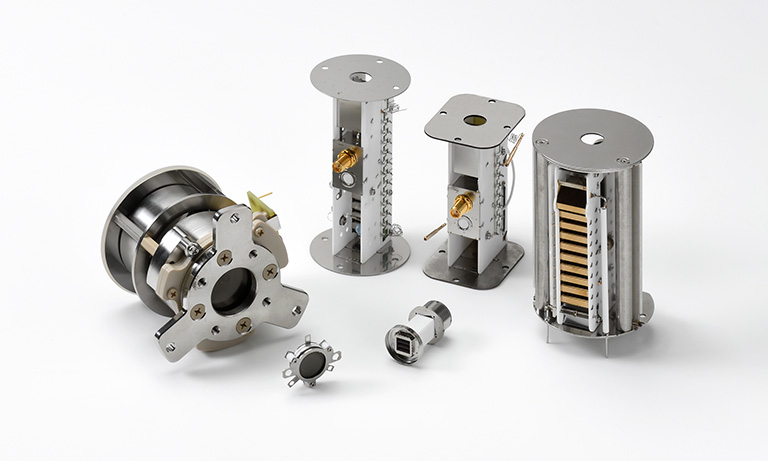United States (EN)
Select your region or country.
Photosynthesis evaluation technology by photon detection
We are working on the development and application of technology to evaluate photosynthesis using optical devices. This technology is expected to be applied to ecosystem conservation, agricultural chemical development, water purification, tree planting, aquaculture, and atmospheric evaluation.
As a foundation for a sustainable society, photosynthesis supplies food and biomass to our lives and industries, and plays an important role in environmental purification and ecosystem conservation.
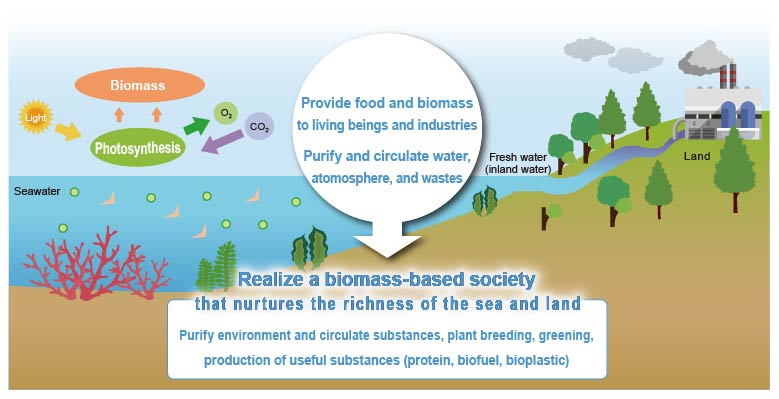
What is plant photon (delayed fluorescence)?
Plant photon is very weak luminescence detected from "photosynthetic organisms" such as algae and plants. It can be detected by a photon detector such as a photomultiplier tube or MPPC, or a high-sensitivity camera with a multiplication function.
By measuring plant photons, you can directly see the movement of photosynthesis. In photosynthesis, chlorophyll uses light energy to decompose water and extract electrons. Electrons are stored in the carrier molecule, most of which is used as energy for photosynthesis. A small part of the stored electrons are converted back to “plant photons”. Plant photons slowly shine in the dark after the external light is extinguished and can be detected with a high sensitivity camera with a photomultiplier tube.

■Related products
■Comparison of visible image and photon counting image
Visible image
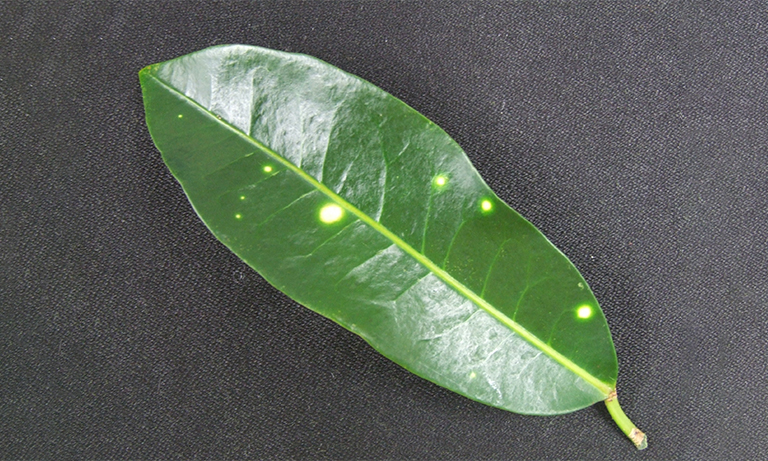
Photon counting image
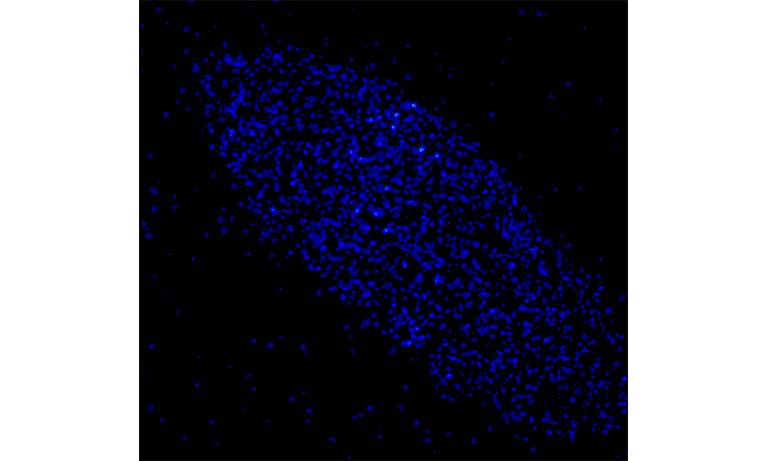
■Measurement of plant photons
Application : Rapid assessment of biological effects of water pollution with plant photons
It seems that 100,000 kinds of chemical substances are used all over the world. Hazard to humans and organisms (environmental risk) when released into the environment can be determined by chemical analysis and bioassay. Chemical analysis measures the amount of substances, and instruments such as GC / MS and LC / MS are used. Bioassay is a technique that uses living organisms to examine the relationship between the amount of substances and their toxicity. Fish, daphnia, algae, plants, etc. are used. The relationship between the two can be used to judge the hazard risk of chemical substances and to develop safe chemical substances.
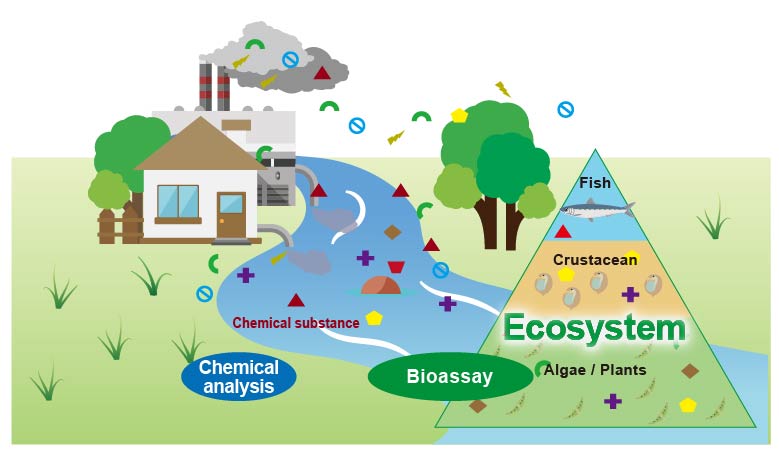
Plant photons are expected to be useful in bioassays to assess water pollution. Algae grow through biomass production by photosynthesis. If the algae metabolism is inhibited by chemical substances, biomass production will decrease and the growth rate will decrease. In conventional bioassays, growth inhibition is evaluated by counting the number of cells. We have developed a technique to estimate growth inhibition in a short time by evaluating the luminescence inhibition of plant photons that reflect photosynthesis. This technique is called algal luminescence toxicity test.
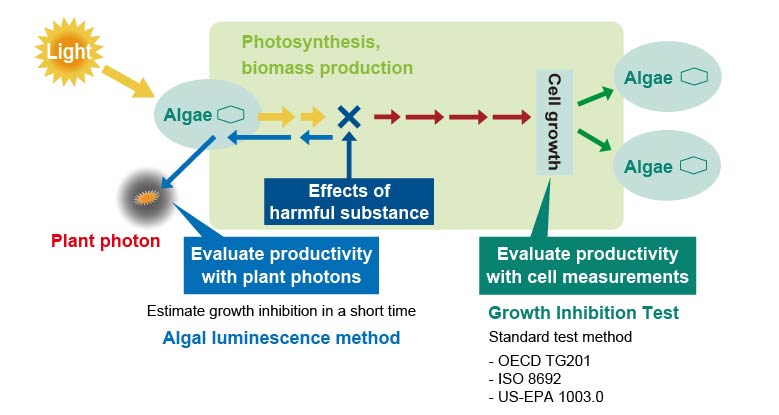
Examples of organisms expected to utilize photosynthesis evaluation technology using photons
Aquaculture feeds, Chaetoceros
For the sustainable use of fishery resources, further development of aquaculture is expected. Algae has been cultivated in large quantities as aquaculture feeds.
Chaetoceros is one of the feed algae for shellfish and crustaceans.
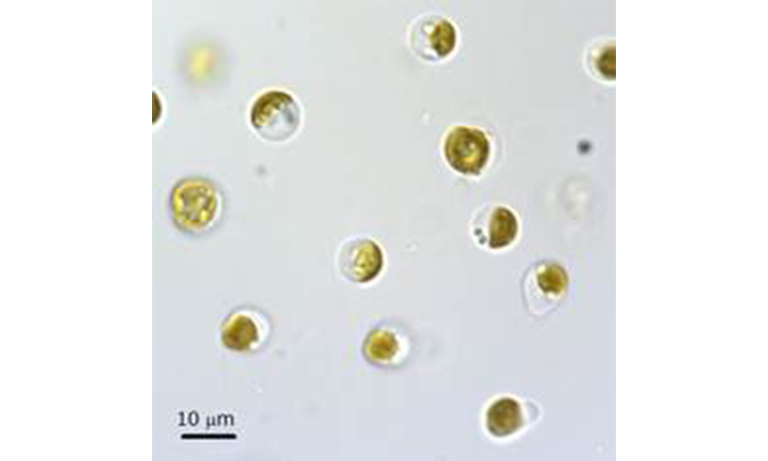
Waterside ecosystem, Macrophytes
Macrophytes (aquatic plants) growing on the waterside and its surrounding ecosystems play a role as a place of water purification by absorption of nutrients and breeding of aquatic animals.
Duckweed is a familiar aquatic plant that grows in paddy fields.
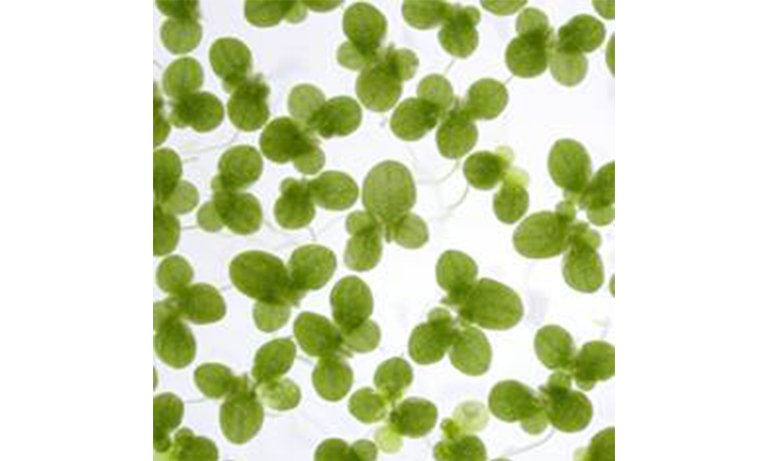
Ocean biodiversity, Reef corals
Reef corals are animal, but It can do photosynthesis by symbiotic algae.
Although coral reefs are an important place for ocean biodiversity, it is said that 20% of coral reefs are destroyed and 50% are in danger. The cause is considered climate change and marine pollution.
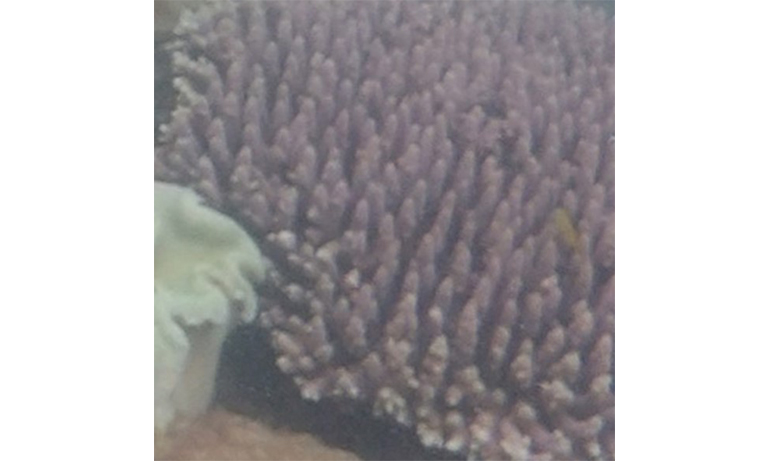
Indicator of air pollution, Lichens
Lichens are composites of a fungus and an algae. It does photosynthesis with absorbing rain and minerals. Lichens population is decreased by air pollution, like a sulfur dioxide.
Parmotrema is a Lichen that proposed as indicator of air pollution in Japan.
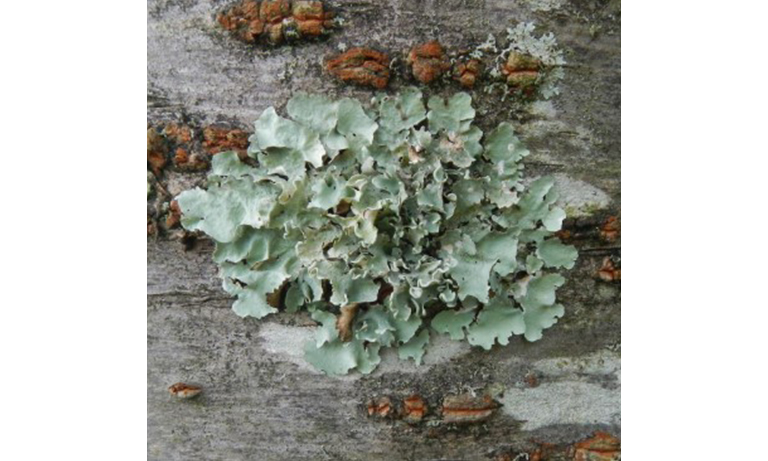
Protein production, Spirulina
Proteins supplied from grain, animal husbandry and fishery products are concerned about supply shortage due to population increase and climate change. Algae is attracting attention as a new production source.
Spirulina is a protein-rich alga that can be provide in large scale, commercially.
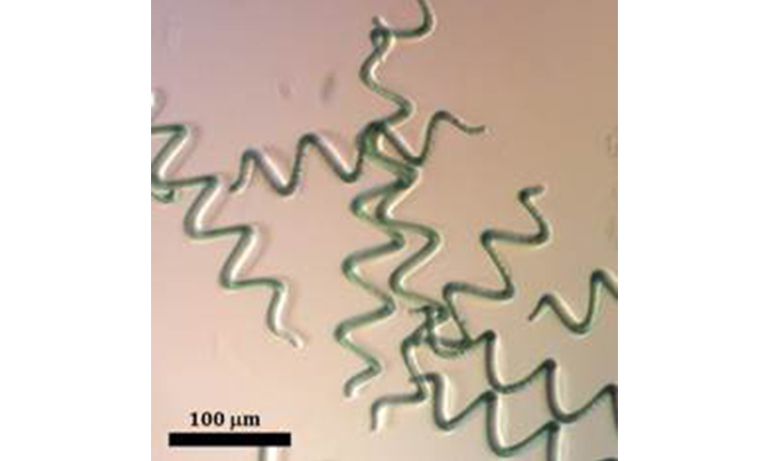
Reference
- Masakazu Katsumata, Yuko Ikushima, Keith Bennett, Yukiko Sato, Ayano Takeuchi, Norihisa Tatarazako, Tomoyuki Hakamata,
“Validation of rapid algal bioassay using delayed fluorescence in an interlaboratory ring study,”
Science of The Total Environment, Volumes 605–606, 2017, Pages 842-851, ISSN 0048-9697, - Ayano TAKEUCHI, Masakazu KATSUMATA, Takashi KOIKE, Yuri TAKATA, Yasuyuki ITATSU, Takashi KUSUI,
“Comparison of the Conventional Algal Growth Inhibition Tests Using Cell Counting and Algal Bioassay Using Delayed Fluorescence: Application to Industrial Effluents, Journal of Water and Environment Technology,”
2014, Volume 12, Issue 4, Pages 367-377, Released August 10, 2014, Online ISSN 1348-2165, - Masakazu Katsumata, Ichiro Takeuchi,
“Delayed fluorescence as an indicator of the influence of the herbicides Irgarol 1051 and Diuron on hard coral Acropora digitifera,”
Marine Pollution Bulletin, Volume 124, Issue 2, 30 November 2017, Pages 687-693
- Confirmation
-
It looks like you're in the . If this is not your location, please select the correct region or country below.
You're headed to Hamamatsu Photonics website for US (English). If you want to view an other country's site, the optimized information will be provided by selecting options below.
In order to use this website comfortably, we use cookies. For cookie details please see our cookie policy.
- Cookie Policy
-
This website or its third-party tools use cookies, which are necessary to its functioning and required to achieve the purposes illustrated in this cookie policy. By closing the cookie warning banner, scrolling the page, clicking a link or continuing to browse otherwise, you agree to the use of cookies.
Hamamatsu uses cookies in order to enhance your experience on our website and ensure that our website functions.
You can visit this page at any time to learn more about cookies, get the most up to date information on how we use cookies and manage your cookie settings. We will not use cookies for any purpose other than the ones stated, but please note that we reserve the right to update our cookies.
1. What are cookies?
For modern websites to work according to visitor’s expectations, they need to collect certain basic information about visitors. To do this, a site will create small text files which are placed on visitor’s devices (computer or mobile) - these files are known as cookies when you access a website. Cookies are used in order to make websites function and work efficiently. Cookies are uniquely assigned to each visitor and can only be read by a web server in the domain that issued the cookie to the visitor. Cookies cannot be used to run programs or deliver viruses to a visitor’s device.
Cookies do various jobs which make the visitor’s experience of the internet much smoother and more interactive. For instance, cookies are used to remember the visitor’s preferences on sites they visit often, to remember language preference and to help navigate between pages more efficiently. Much, though not all, of the data collected is anonymous, though some of it is designed to detect browsing patterns and approximate geographical location to improve the visitor experience.
Certain type of cookies may require the data subject’s consent before storing them on the computer.
2. What are the different types of cookies?
This website uses two types of cookies:
- First party cookies. For our website, the first party cookies are controlled and maintained by Hamamatsu. No other parties have access to these cookies.
- Third party cookies. These cookies are implemented by organizations outside Hamamatsu. We do not have access to the data in these cookies, but we use these cookies to improve the overall website experience.
3. How do we use cookies?
This website uses cookies for following purposes:
- Certain cookies are necessary for our website to function. These are strictly necessary cookies and are required to enable website access, support navigation or provide relevant content. These cookies direct you to the correct region or country, and support security and ecommerce. Strictly necessary cookies also enforce your privacy preferences. Without these strictly necessary cookies, much of our website will not function.
- Analytics cookies are used to track website usage. This data enables us to improve our website usability, performance and website administration. In our analytics cookies, we do not store any personal identifying information.
- Functionality cookies. These are used to recognize you when you return to our website. This enables us to personalize our content for you, greet you by name and remember your preferences (for example, your choice of language or region).
- These cookies record your visit to our website, the pages you have visited and the links you have followed. We will use this information to make our website and the advertising displayed on it more relevant to your interests. We may also share this information with third parties for this purpose.
Cookies help us help you. Through the use of cookies, we learn what is important to our visitors and we develop and enhance website content and functionality to support your experience. Much of our website can be accessed if cookies are disabled, however certain website functions may not work. And, we believe your current and future visits will be enhanced if cookies are enabled.
4. Which cookies do we use?
There are two ways to manage cookie preferences.
- You can set your cookie preferences on your device or in your browser.
- You can set your cookie preferences at the website level.
If you don’t want to receive cookies, you can modify your browser so that it notifies you when cookies are sent to it or you can refuse cookies altogether. You can also delete cookies that have already been set.
If you wish to restrict or block web browser cookies which are set on your device then you can do this through your browser settings; the Help function within your browser should tell you how. Alternatively, you may wish to visit www.aboutcookies.org, which contains comprehensive information on how to do this on a wide variety of desktop browsers.
5. What are Internet tags and how do we use them with cookies?
Occasionally, we may use internet tags (also known as action tags, single-pixel GIFs, clear GIFs, invisible GIFs and 1-by-1 GIFs) at this site and may deploy these tags/cookies through a third-party advertising partner or a web analytical service partner which may be located and store the respective information (including your IP-address) in a foreign country. These tags/cookies are placed on both online advertisements that bring users to this site and on different pages of this site. We use this technology to measure the visitors' responses to our sites and the effectiveness of our advertising campaigns (including how many times a page is opened and which information is consulted) as well as to evaluate your use of this website. The third-party partner or the web analytical service partner may be able to collect data about visitors to our and other sites because of these internet tags/cookies, may compose reports regarding the website’s activity for us and may provide further services which are related to the use of the website and the internet. They may provide such information to other parties if there is a legal requirement that they do so, or if they hire the other parties to process information on their behalf.
If you would like more information about web tags and cookies associated with on-line advertising or to opt-out of third-party collection of this information, please visit the Network Advertising Initiative website http://www.networkadvertising.org.
6. Analytics and Advertisement Cookies
We use third-party cookies (such as Google Analytics) to track visitors on our website, to get reports about how visitors use the website and to inform, optimize and serve ads based on someone's past visits to our website.
You may opt-out of Google Analytics cookies by the websites provided by Google:
https://tools.google.com/dlpage/gaoptout?hl=en
As provided in this Privacy Policy (Article 5), you can learn more about opt-out cookies by the website provided by Network Advertising Initiative:
http://www.networkadvertising.org
We inform you that in such case you will not be able to wholly use all functions of our website.
Close











